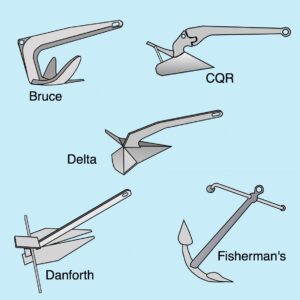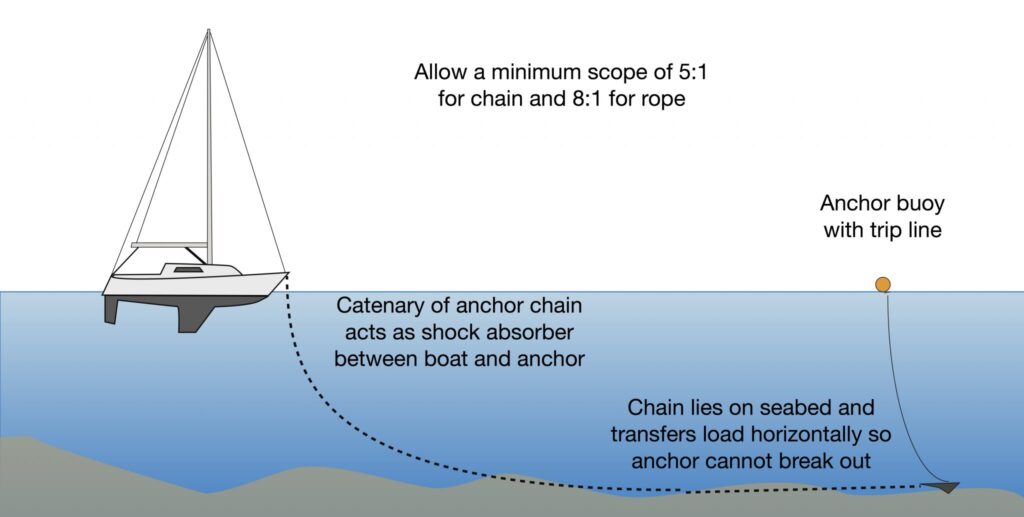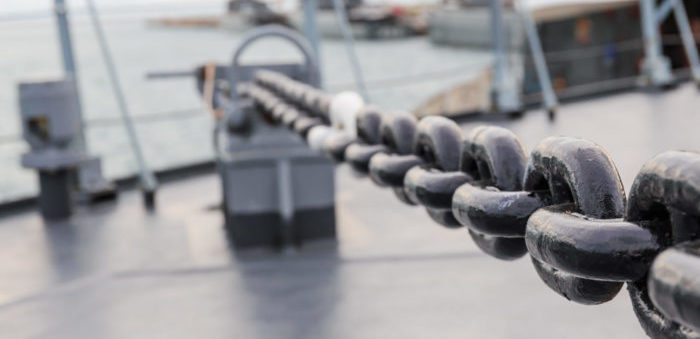Setting an anchor correctly with confidence and knowing that your boat will be safe in a well-secured anchorage, gives you a sense of relaxation without concerning to rely on mooring and marinas when cruising. Keep in mind that anchoring plays an intense role in boat handling skills.
If you don’t have at least a basic knowledge of how to anchor properly, then your boat and also the other boats anchored nearby, will be at risk. Although, to anchor right is not always an easy process, since there are different types of anchors and conflicting arguments of which anchor is the most appropriate for the type and the size of your boat.
Type of anchors
According to Simon Jollands in Boat Handling, Practical, Preparation, selecting the type and size of anchor depends on the sea area it will be used in.
Seafarers and mariners should always be in line with the manufacturers’ recommendations and opt for a big anchor for their vessels that will boost its performance. Usually, cruising yachts are equipped with at least two types of anchor, plus suitable lengths of chain and rope cables.
Below, you may see types of anchor:

- Bruce – good power to weight, easy to handle, holds well in mud, sand and rock
- CQR or plough – good power to weight, stows well on bow roller, though awkward on deck. Holds well in mud and sand. Very popular and reliable
- Delta – good power to weight, also plough shaped. Stows well on bow roller
- Danforth – stows flat, good kedge anchor, hard to break out of mud. Excellent back up anchor. Prone to pull out if the wind or current reverses
- Fisherman’s – the traditional anchor. Good for rocky and heavily weeded seabeds, but heavy and awkward and not so good in sand and mud.
Chain and wrap
The anchor cables are either chain, or rope, or both.
Anchor working efficiently:
- The vessel’s pull on its cable must be parallel with the bottom of the sea, or else the anchor will break out from the sea bed and drag the vessel. This is where the weight of the chain comes to prevent an unpleasant situation like this, providing the sufficient length of chain lying on the sea bottom.
- The effect of the catenary curve of the cable between the boat and the anchor. This acts as a shock safe-guard between the boat and the anchor, so in case the boat is hitted by an unexpectedly gust of wind, the cable will immediately straighten and tighten before it pulls hard on the anchor.
Pulling an anchor and chain might be hard, especially if it doesn’t have an anchor winch. But, unlike rope, the chain is much stronger and won’t chafe in the bottom of the sea. A practical solution is to have the anchor cable consist of part chain, which lies on the sea bed and part rope, to make it more workable. An all rope cable is much lighter and easier to manage, but less secure and prone to chafe. All rope cables are usually used with kedge anchors.

As for the amount, or scope of the cable that you should use, they both depend on different factors such as the type of cable, the depth of water beneath the keel and plus the weather conditions.
In essence:
in calm weather conditions: the absolute minimum scope for chain is considered to be 3:1 and 5:1 for rope.
in light to moderate conditions: a ratio of 5:1 for chain and 8:1 for rope is generally accepted.
in worsening conditions: a ratio of 8:1 for chain and 10:1 for rope.
A further worth considering matter when sailing, is to choose the place to anchor. In order to succeed, please keep in mind the tips below:
- Search for recommended anchorages near your destination, they are marked on the chart with anchor symbols.
- Look for a place that will be sheltered from wind and waves in as many wind directions as possible and away from strong tidal streams.
- Check the chart to see whether the ground will be suitable for anchoring.
- Make sure you check the charted depths.
- Avoid anchoring on a lee shore even if the chart has an anchor symbol on it.
Preparing the anchor:
- In light to moderate conditions use a ratio of 5:1 length of chain to depth, or 8:1 length of rope to depth.
- Approach the anchorage, check other boats. Are they anchored or moored? Where are their anchors? Are they a similar size to yours?
- Choose the spot to lay anchor, check depth is good, approach the spot slowly into the wind or tide (check how other boats are lying).
- If you have crew ask someone to operate the anchor at the bow.
Laying anchor:
- Stop the boat, lower the anchor under control to the seabed.
- Reverse slowly away, laying out cable in a controlled manner.
- When sufficient cable is let out, select neutral and check that the chain is tight and anchor is set and holding.
- If unsure, use a little reverse thrust to check it is holding.
- Take visual bearings of objects ashore to check the anchor is not dragging, remember the boat will swing on the anchor.
- Set deep and shallow alarms on the depth sounder. Then relax…
Weighing anchor:
- To raise anchor, motor slowly towards it until the chain is vertically above it. Ask a crew to indicate when, with hand signals.
- Now bring in the chain, keeping it as near vertical as possible.
- If the anchor does not break out, cleat the chain tight and motor gently astern until the anchor breaks out.

































































